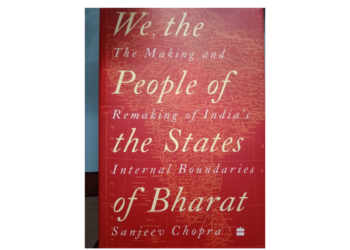BY RUKMA SALUJA
SATYARTH NAYAK turns his pen to mythology, a subject close to his heart, and digs out lesser known stories from our scriptures
Mahagatha: 100 Tales from the Puranas is a first-of-its-kind compilation of the 100 greatest mythological tales from the Puranas of Hinduism. Beautifully illustrated, Mahagatha presents a mix of popular and lesser-known stories. The mythological magnum opus vividly tells stories in a chronological order starting from Satya Yug to Kali Yug. It also delves into the minds of gods, demons and humans alike, and seeks a deeper understanding of their motivations. Using Puranic markers, he constructs a narrative that travels through the four yugas, offering continuous and organic action. It reveals that these stories are not isolated events but linked to each other in the grand scheme of things, that every occurrence has a past and a future, a cause and effect, an interconnected cycle of karma and karma-phal.

HarperCollins
You have written a thriller and also actress Sridevi’s biography, what prompted you to write Mahagatha: 100 Tales from the Puranas?
Mahagatha was born out of my love and fascination for Hindu mythology. Growing up, I remember hearing stories of devas and asuras. I became curious to know more such tales and entered the world of the Puranas. There, I discovered a universe of stories, many known but many also unknown. That’s when I decided to create an epic collection of the 100 greatest tales from the Puranas. Mahagatha is filled with grand stories of gods, demons, sages and kings, narrated for the first time in a uniquely chronological format across the yugas, from Satya Yuga to Kali Yuga, that will make you connect the dots of Hindu mythology like never before.
Do stories from Indian scriptures still need to be told?
Yes, it’s a universe of wisdom that has not been fully tapped. I discovered so many beautiful stories in the Puranas that I had never heard before like the one where Vishnu is beheaded or where Saraswati curses Lakshmi or where Harishchandra tricks Varuna.
From where did you find the lesser known stories? What’s the sort of research that went into your work?
There are many English editions of the Puranas available today and they became my source for Mahagatha. My research primarily involved reading those texts and listing the stories that I found most intriguing. The original list comprised almost 300 stories out of which I selected 100 for Mahagatha. I enjoyed writing them and I hope my readers relish them equally.
Can the younger readership still connect to ancient lore?
Given how well books on mythology are performing commercially, there’s surely a huge readership across age groups for this genre. The wisdom and life lessons found in such ancient lore is what appeals to the younger readers. It also makes them aware of the rich textual and cultural heritage of India. When they read Mahagatha, they will realise that these 100 stories are not random events but all linked to one another as a grand cosmic cycle of cause and effect which is how our universe functions.








